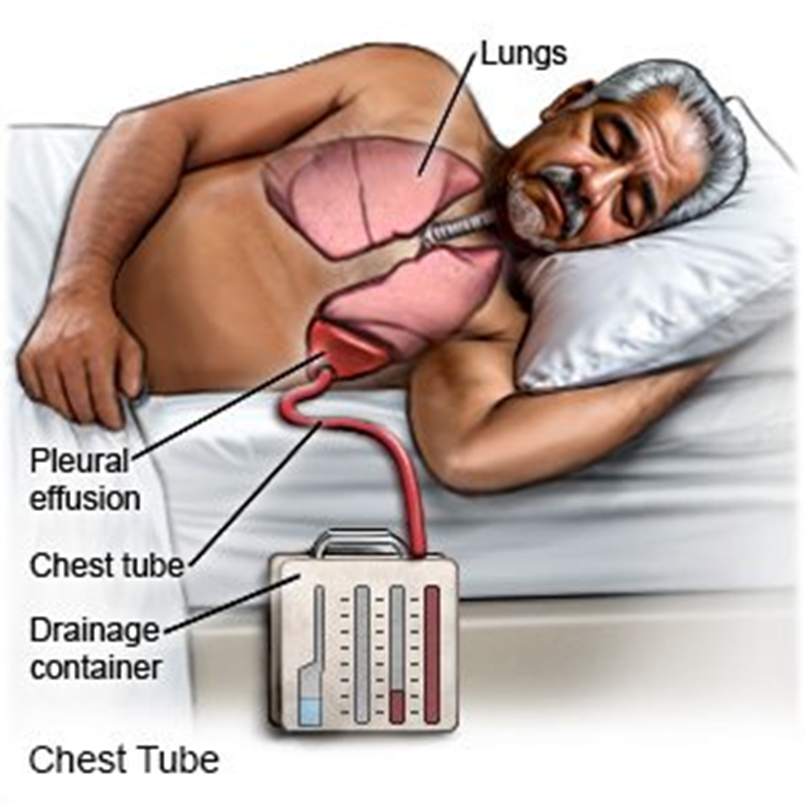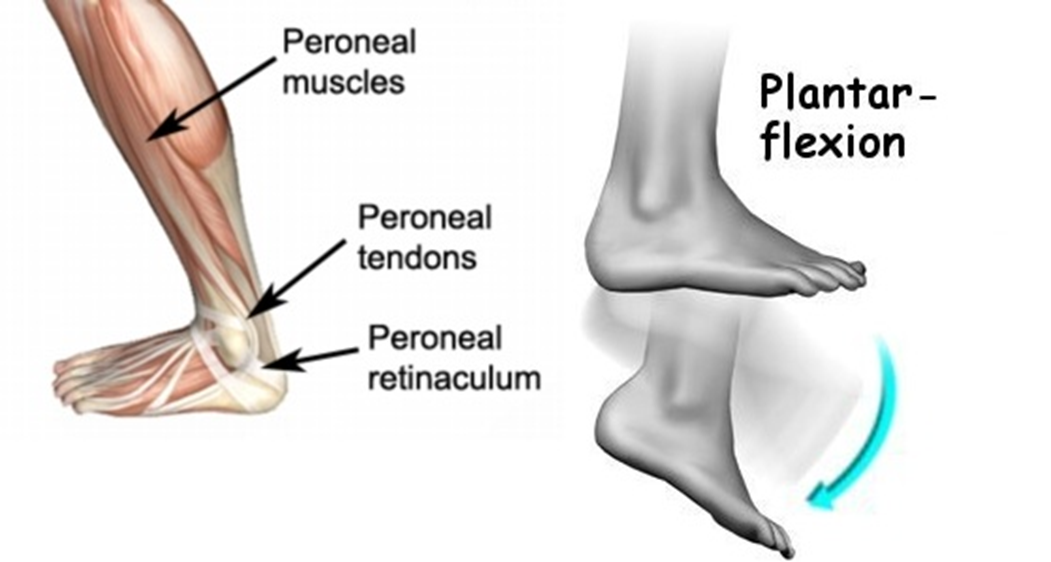The provider writes an order for a client to have a chest tube removed. Which of the following are appropriate reasons to discontinue a chest tube? Select all that apply.
Breath sounds diminished on auscultation.
Improved respiratory status.
Symmetrical rise and fall of the chest.
Oxygen saturation at least 90%.
Continuous bubbling in water seal chamber.
Chest is asymmetrical on inspiration and expiration.
Bilateral breath sounds clear on auscultation.
Correct Answer : B,C,G
Choice A Reason:
Breath sounds diminished on auscultation indicate that there may still be fluid or air in the pleural space, suggesting that the chest tube is still needed to drain the pleural cavity. This is not an appropriate reason to discontinue a chest tube as it indicates ongoing issues that need to be resolved.
Choice B Reason:
Improved respiratory status is a key indicator that the chest tube has successfully resolved the underlying issue, such as a pneumothorax or pleural effusion. When the patient shows signs of stable and improved breathing, it suggests that the chest tube has served its purpose and can be safely removed.

Choice C Reason:
Symmetrical rise and fall of the chest during respiration indicate that both lungs are expanding and contracting normally. This symmetry is a sign that the pleural space is no longer compromised, making it an appropriate reason to remove the chest tube.
Choice D Reason:
Oxygen saturation at least 90% is a general indicator of adequate oxygenation but does not specifically address the condition of the pleural space. While important, it is not a direct reason to discontinue a chest tube without other supporting signs.
Choice E Reason:
Continuous bubbling in the water seal chamber indicates an ongoing air leak, which means that the chest tube is still necessary to evacuate air from the pleural space. This is not an appropriate reason to remove the chest tube.
Choice F Reason:
An asymmetrical chest on inspiration and expiration suggests that there is still an issue with lung expansion, possibly due to fluid or air in the pleural space. This condition requires the chest tube to remain in place until resolved.
Choice G Reason:
Bilateral breath sounds clear on auscultation indicate that both lungs are free of fluid and air, and are functioning normally. This is a strong indicator that the chest tube has achieved its purpose and can be safely removed.
Nursing Test Bank
Naxlex Comprehensive Predictor Exams
Related Questions
Correct Answer is ["B","C","E"]
Explanation
Choice A Reason:
Excessive salivation, also known as water brash, can occur in some cases of GERD, but it is not one of the most common symptoms. Water brash happens when the body produces extra saliva to neutralize the acid in the esophagus. While it can be associated with GERD, it is not as prevalent as other symptoms like heartburn or regurgitation.
Choice B Reason:
Dyspepsia, or indigestion, is a common symptom of GERD. It includes discomfort or pain in the upper abdomen, bloating, and nausea. Dyspepsia occurs because the stomach acid irritates the lining of the esophagus and stomach, leading to these uncomfortable sensations. Therefore, dyspepsia is a typical finding in patients with GERD.
Choice C Reason:
Regurgitation is a hallmark symptom of GERD. It involves the backflow of stomach contents into the esophagus and sometimes into the mouth, causing a sour or bitter taste. This symptom is due to the weakening or relaxation of the lower esophageal sphincter, which allows stomach acid to escape into the esophagus.
Choice D Reason:
Blood-tinged sputum is not a common symptom of GERD. While severe cases of GERD can lead to complications such as esophagitis or esophageal ulcers, which might cause bleeding, this is not typical in most GERD cases. Blood-tinged sputum would warrant further investigation to rule out other conditions such as infections or malignancies.
Choice E Reason:
Flatulence, or excessive gas, can be associated with GERD. The digestive process can be affected by the reflux of stomach acid, leading to increased gas production and bloating. While not as prominent as dyspepsia or regurgitation, flatulence can still be a symptom experienced by patients with GERD.
Correct Answer is D
Explanation
Choice A Reason:
Pronation of the hands.
Pronation of the hands is not typically associated with decorticate posturing. Decorticate posturing is characterized by the flexion of the arms and wrists, with the hands often clenched into fists. Pronation refers to the rotation of the hands so that the palms face downward, which is not a feature of decorticate posturing.
Choice B Reason:
Extension of the arms.
Extension of the arms is more characteristic of decerebrate posturing, not decorticate posturing. In decorticate posturing, the arms are flexed and held tightly to the chest, not extended. This flexion is due to damage to the cerebral hemispheres, which affects the corticospinal tract.
Choice C Reason:
External rotation of the lower extremities.
External rotation of the lower extremities is not a typical finding in decorticate posturing. In decorticate posturing, the legs are usually extended and rigid, with the toes pointed. External rotation would indicate a different type of posturing or neurological condition.
Choice D Reason:
Plantar flexion of the legs.
Plantar flexion of the legs is a characteristic finding in decorticate posturing. This involves the toes pointing downward, which is a result of the increased muscle tone and reflexes due to the brain injury. This posture indicates severe damage to the brain, specifically the corticospinal tract.

Whether you are a student looking to ace your exams or a practicing nurse seeking to enhance your expertise , our nursing education contents will empower you with the confidence and competence to make a difference in the lives of patients and become a respected leader in the healthcare field.
Visit Naxlex, invest in your future and unlock endless possibilities with our unparalleled nursing education contents today
Report Wrong Answer on the Current Question
Do you disagree with the answer? If yes, what is your expected answer? Explain.
Kindly be descriptive with the issue you are facing.
